
~ ~ ~
These announcements are interactive. Click on them for more information.
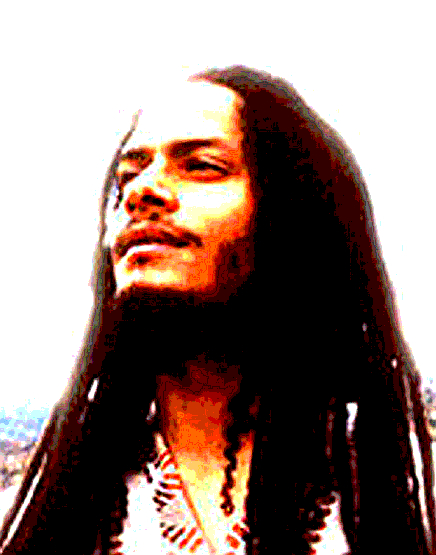
The National – Fake Empire
https://youtu.be/KehwyWmXr3U
Imagine Dragons – Demons
https://youtu.be/mWRsgZuwf_8
Monchy y Alexandra – Dos Locos
https://youtu.be/ESBMw9-ht2o
Mad Professor live @ Scheune Dresden 2015
https://youtu.be/qG9pUeTyD0s
Peter Gabriel & Sinead O’Connor – Don’t Give Up
https://youtu.be/qsxFclkJlIw
Bob Marley – Get Up Stand Up
https://youtu.be/q7iXcKKpdx0
Shakira – Try Everything
https://youtu.be/c6rP-YP4c5I
Natalia Lafourcade – Nunca Es Suficiente
https://youtu.be/410cZw2YI0g
Jefferson Airplane – Somebody to Love
https://youtu.be/-Xj03UNGFHU
Ben Harper & Charlie Musselwhite – I Ride At Dawn
https://youtu.be/jbz1cKUyXhQ
Aswad - Warrior Charge
https://youtu.be/E25u3xfiNW8
Elijah Emanuel – Luchador
https://youtu.be/4hZPeS5MyHY
Valerie Wellington – Bad Avenue
https://youtu.be/xu79m18hUS4
Big Mama Thornton – Ball And Chain
https://youtu.be/vypSOetzlQo
Cultura Profética – Festival de Viña del Mar 2015
https://youtu.be/pmOETqV78qE
On Wednesday, June 22, spokespersons from both the Colombian government and the Revolutionary Armed Forces of Colombia (FARC) announced that after years of peace talks they have finally reached a conclusive agreement that will lead to a complete bilateral ceasefire. The historic announcement marks the end of the half-century-long civil war that has claimed over 200,000 lives and displaced millions across the country’s rural areas.
President Juan Manuel Santos and FARC commander Rodrigo Londoño Echeverri (known by the alias Timochenko) shook hands at a ceremony in Havana, where the talks have been held since they began in 2013. Cuban President Rául Castro presided over the event and stood by as Timochenko, the Marxist rebel group’s most senior leader, reached out his hand to President Santos, a former defense minister during the Uribe administration and member of the conservative Party of the U. Also in attendance was Venezuelan President Nicolás Maduro, whose country played a key role in encouraging the FARC to enter negotiations, as well as UN Secretary General Ban-Ki Moon and the leaders of several other Latin American and Caribbean nations.
Santos spoke in jubilant terms about bringing the protracted and bloody conflict to an end, noting that for many Colombians, war is all they know. He said: “Colombia got used to living in conflict. We don’t have even the slightest memories of what it means to live in peace.” Timochenko, holding back tears in an emotional statement, said: “May this be the last day of war.”
According to a joint communique, the two delegations reached a mutual position on safety guarantees for demobilized guerrillas and a program for reintegration into civilian life. The FARC’s leadership is said to have issued an order to “silence all rifles,” which will be followed by a decommissioning process in which all arms will be surrendered and put out of use. The Colombian government will immediately end operations against the FARC in exchange for an agreement to disarm 180 days after the signing of a final peace deal.
Ivan Cepeda, a congressman from the left-wing Alternative Democratic Pole who was an early advocate of dialogue, emphasized that the outcome was not just the result of the efforts of the Colombian government, but also many sectors from across Colombian society including social movements, unions, and human rights organizations. Amongst these groups is Marcha Patriotica, a popular movement coalition of over 2,000 grassroots organizations that organized the historic march for peace in April 2013, in which hundreds of thousands of Colombians descended on the county’s capital city Bogotá to demonstrate in support of peace.
Cepeda also paid tribute to the role of the international community and solidarity with the process from across the world. He noted that in addition to hosting the talks in its capital city, Cuba had along with Norway served as guarantor of the peace talks, while Venezuela and Chile had worked in an accompaniment role.
The talks have been going on since 2013 and deadlines have been extended on several occasions. A final deal in which all of the finalized agreements will be codified together in one document is expected in the coming months. Once signed, the agreement will be put to a referendum in which the Colombian public will have the opportunity to accept or reject its terms.
After a long period of equivocation on the part of the United States, the dialogue belatedly received US endorsement from Secretary of State John Kerry when he met with representatives of both negotiating teams during a visit to Cuba earlier this year. Representatives from the United States were in attendance along with diplomats from several European nations.
To be sure, the talks have been controversial from the outset. Opponents to dialogue from the political right have argued that negotiating with the FARC, whom they consider to be “terrorists,” has been a dangerous and immoral surrender to violent insurrection. Former President Álvaro Uribe, whose administration engaged in an aggressive counter-offensive against the FARC and other leftist insurgent groups, has been a particularly outspoken opponent of dialogue, even launching a signature drive denouncing the peace talks as promoting “impunity” for the FARC. Uribe’s preferred candidate in the 2014 presidential election, Óscar Iván Zuluaga, promised throughout the campaign to discard the peace talks in favor of a return to all-out counter-insurgency, with the hope to defeat the FARC militarily and force a surrender on less agreeable terms. Santos defeated Zaluaga in what was widely seen as a public referendum on the continuation of the dialogue.
On the other side of the political spectrum, fears have been voiced that a disarmament of the FARC might leave its demobilized members defenseless against right-wing violence. Such concerns are based in large part on the FARC’s experience from the previous attempt at peace in the late 1980s and early 1990s in which several thousands of members of the Unión Patriótica were murdered. The political party, which was made up partially of FARC members but also leftist intellectuals, was formed to provide the radical left a route into electoral politics after the finalization of a peace deal and formal end to hostilities. Indeed, one of the major areas of contention in the current round of talks has been an agreement regarding a path into peaceful politics for the FARC.
But Santos has struck a surprisingly conciliatory tone, arguing for the importance of democracy and the inclusion of all perspectives. Though maintaining that the FARC will always be his sworn enemy, he said that battles would in future be fought through political debate rather than through violence. He said: “Now that we have agreed peace, as head of state and as a Colombian, I will argue, with equal determination their right to express and to continue their political struggle by legal means, even if we never agree. That is the essence of democracy to which we welcome.”
COHA’s view
Santos was the primary example of a war monger as Minister of Defense in the Uribe government and one of the most predictable and flagrant human rights violators. His aggressive anti-guerrilla policies included the 2008 incursion into Ecuadorian territory that led to the deaths of over twenty militants and sparked the 2008 Andean diplomatic crisis. However, with his actions throughout the process, he has shown himself to be a peacemaker of considerable caliber.
Despite the growing pressure for him to further engross Colombia as the main US ally in South America, he has persisted to present himself as a Latin Americanist and not a US pawn in the region. The way that he has come out in favor of the peace agreement will no doubt be looked back on as one of the major events in Colombian history. Though it is perhaps wise to wait for the referendum by the public, COHA sees Santos as a potential nominee for the Nobel Peace Prize for his leadership throughout the talks.
For the guerrillas, there is terrible risk that they are taking, especially in terms of how the Union Patriotica genocide decimated some of their leading figures and forced them to retreat back into the jungle. Their decision to take a leap into the unknown by laying down their weapons has been brave and commendable.
Just as the Santos government has a responsibility to move toward demilitarization of the countryside, the FARC too will have to adapt to a culture of non-violence and come to terms with its past. With the strength of the Marcha Patriotica and other social movements, there is a strong base for a resurgent left in Colombia to participate in the political process through peaceful and democratic channels.
Though there is much to celebrate, there is also much work still ahead. All parties now need to focus on building institutions that will foster peace and greater democracy for Colombia’s future.
On June 29 the University of Panama — including all of its branches — goes to the polls to elect a new rector, deans and vice deans in each department and the heads of the regional university centers. The outgoing rector and some of his entourage are the subjects of at least six different criminal investigations by the prosecutors of the Public Ministry, with other complaints winding their ways through the Comptroller General’s office. These include probes of large and valuable tracts of university land essentially given away to people with political connections, at least $3.5 million missing from the university’s treasury without explanation over the past few years, a “private foundation” into which university funds were poured for years without accountability, “innovation centers” (CIDETEs) whose purchases the administration refuses to explain, an employee on leave of absence after police arrested him for allegedly smuggling drugs using a university vehicle, people getting degrees without having done the class time and work to earn them — and the audits have only gone back three or four years of rector Gustavo García de Paredes’s 24-year reign at the university.
Although he is not a candidate, the self-proclaimed “Rector Magnifico” has been handing out raises and bonuses as if trying to buy votes. For which, if any, of the six candidates for rector García de Paredes would like to tip the scales is not a matter of public knowledge. It may be presumed that physics professor and former Sciences Faculty dean Eduardo Flores, who ran for rector five years ago, would not be favored by the man who beat him. But an open endorsement of a favored successor would be something like the kiss of death.
The last time Flores clobbered García de Paredes in the student vote, did better than expected among the faculty and was trounced by the non-academic employees who owe their jobs to the rector. That added up to a Flores win in total raw votes, but when the heavier weight to faculty and staff choices was calculated, a rout in favor of García de Paredes.
The student body is almost entirely different from five years ago, but the body of university employees is by and large the product of a political patronage machine that has been in power for a generation. However, if such employees might be expected to be obsequious yes-people, maybe not when prosecutors and auditors are nosing around and asking questions. Can the fix be in under such conditions?
In a way it already is. Many of the faculty and staff have received extra pay for consulting or other services — often of questionable value to the university — and have become reliant on that income. None of the six candidates for rector — Flores, Argentina Yin, Justo Medrano, Dorindo Cortez, Nicolás Jerome and Gilberto Boutin — are talking about eliminating sinecures. They are all talking about various Rs: reform, renewal, rehabilitation or renovation (but not revolution). Flores is promising that nobody will lose his or her job. No candidate is mentioning the CIDETEs or any moves to set aside the land transactions. Inflated salaries are a taboo subject. Accountability for what has gone on is off the agenda. Everything is in prospective terms, as if a generation of scandal had never happened. The result is petty bickering about things like who would have a right to retire and then double dip atop a pension with an administrator’s salary. As law professor Miguel Antonio Bernal put it, “the current UP campaign is like this: prudish, hypocritical, vulgar, anarchic, dirty and biased. Out of it will come a new rector and new or re-elected deans and regional center directors.” Flores, playing to people who voted decisively against him five years ago, is content to make the argument that the university must make mostly unspecified changes if it is to survive as an institution. It’s as if there is a general consensus that things can’t go on as they have, but that everyone who believes it thinks that his or her particular gravy train can and must keep running on time.
Is García de Paredes whispering to people about the covert anointment of a successor? It could be. But some of his recent ploys would seem to have undermined the credibility of such a thing. Yes, he did send out a tiny band of student sycophants to block the street and do battle with the riot squad in order to demonstrate displeasure with the investigations. All it showed was that he doesn’t have actual campus radicals on his bandwagon like he once did, and that, old apparatchik of the dictatorship that he is, his ties with the forces of repression aren’t so good anymore. He offered the law school’s most internationally famous graduate, entertainer and former Tourism Minister Rubén Blades, an honorary doctorate — and Blades turned him down, at least pending a less scandalous new university administration taking office.
Is García de Paredes’s patronage machine like Gorbachev’s Communists, or the last Aztecs? Perhaps. They don’t want to go, but they probably can’t stay under the same terms. An era does seem to be ending, albeit with an apologetic whimper.

[Editor’s note: The following is the full text of a dissenting opinion by US Supreme Court decision Sonia Sotomayor, on what would seem to be a minor evidentiary matter. Are you one of those US citizens in Panama who supposes that the US Constitution and the exclusionary rule implied from it apply here? Wise up. We have an entirely different jurisprudence here in Panama, of the Civil Code rather than the Common Law family of legal systems. But with that caveat, this dissent, issued on the losing side of a 5-3 vote, is of enormous importance to US politics and law in this election year. One of the presumed major party candidates, the one who has the backing of most of the nation’s white supremacists, is openly running on a platform advocating racial and religious profiling of individuals by US law enforcement agencies. He would make what is notoriously de facto into something de jure, and he would have to power to nominate US Supreme Court justices who would enforce that program. (One of the first categories of people whom we can infer from that candidates statements is to be screened out of any rights would be those with names like Sonia Sotomayor — something that ought to be a matter of concern to any Panamanian thinking about travel to or through the United States.) Theoretically the law is supposed to be blind to partisan concerns as well as to race and nationality, but to put too much faith in that would be particularly naive in the USA in this election year. There are choices to be made and Madame Justice Sotomayor put her finger on one of the principal ones.]
SUPREME COURT OF THE UNITED STATES
No. 14–1373
UTAH, PETITIONER v. EDWARD JOSEPH STRIEFF, JR.
ON WRIT OF CERTIORARI TO THE SUPREME COURT OF UTAH
[June 20, 2016]
JUSTICE SOTOMAYOR, with whom JUSTICE GINSBURG joins as to Parts I, II, and III, dissenting.
The Court today holds that the discovery of a warrant for an unpaid parking ticket will forgive a police officer’s violation of your Fourth Amendment rights. Do not be soothed by the opinion’s technical language: This case allows the police to stop you on the street, demand your identification, and check it for outstanding traffic warrants — even if you are doing nothing wrong. If the officer discovers a warrant for a fine you forgot to pay, courts will now excuse his illegal stop and will admit into evidence anything he happens to find by searching you after arresting you on the warrant. Because the Fourth Amendment should prohibit, not permit, such misconduct, I dissent.
I
Minutes after Edward Strieff walked out of a South Salt Lake City home, an officer stopped him, questioned him, and took his identification to run it through a police database. The officer did not suspect that Strieff had done anything wrong. Strieff just happened to be the first person to leave a house that the officer thought might contain “drug activity.” App. 16–19. As the State of Utah concedes, this stop was illegal. App. 24. The Fourth Amendment protects people from “unreasonable searches and seizures.” An officer breaches that protection when he detains a pedestrian to check his license without any evidence that the person is engaged in a crime. Delaware v. Prouse, 440 U.S. 648, 663 (1979); Terry v. Ohio, 392 U.S. 1, 21 (1968). The officer deepens the breach when he prolongs the detention just to fish further for evidence of wrongdoing. Rodriguez v. United States, 575 U.S. ___, ___–___ (2015) (slip op., at 6–7). In his search for lawbreaking, the officer in this case himself broke the law.
The officer learned that Strieff had a “small traffic warrant.” App. 19. Pursuant to that warrant, he arrested Strieff and conducting a search incident to the arrest, discovered methamphetamine in Strieff’s pockets.
Utah charged Strieff with illegal drug possession. Before trial, Strieff argued that admitting the drugs into evidence would condone the officer’s misbehavior. The methamphetamine, he reasoned, was the product of the officer’s illegal stop. Admitting it would tell officers that unlawfully discovering even a “small traffic warrant” would give them license to search for evidence of unrelated offenses. The Utah Supreme Court unanimously agreed with Strieff. A majority of this Court now reverses.
II
It is tempting in a case like this, where illegal conduct by an officer uncovers illegal conduct by a civilian, to forgive the officer. After all, his instincts, although unconstitutional, were correct. But a basic principle lies at the heart of the Fourth Amendment: Two wrongs don’t make a right. See Weeks v. United States, 232 U.S. 383, 392 (1914). When “lawless police conduct” uncovers evidence of lawless civilian conduct, this Court has long required later criminal trials to exclude the illegally obtained evidence. Terry, 392 U.S., at 12; Mapp v. Ohio, 367 U.S. 643, 655 (1961). For example, if an officer breaks into a home and finds a forged check lying around, that check may not be used to prosecute the homeowner for bank fraud. We would describe the check as “‘fruit of the poisonous tree.'” Wong Sun v. United States, 371 U.S. 471, 488 (1963). Fruit that must be cast aside includes not only evidence directly found by an illegal search but also evidence “come at by exploitation of that illegality.” Ibid.
This “exclusionary rule” removes an incentive for officers to search us without proper justification. Terry, 392 U.S., at 12. It also keeps courts from being “made party to lawless invasions of the constitutional rights of citizens by permitting unhindered governmental use of the fruits of such invasions.” Id., at 13. When courts admit only lawfully obtained evidence, they encourage “those who formulate law enforcement polices, and the officers who implement them, to incorporate Fourth Amendment ideals into their value system.” Stone v. Powell, 428 U.S. 465, 492 (1976). But when courts admit illegally obtained evidence as well, they reward “manifest neglect if not an open defiance of the prohibitions of the Constitution.” Weeks, 232 U.S., at 394.
Applying the exclusionary rule, the Utah Supreme Court correctly decided that Strieff’s drugs must be excluded because the officer exploited his illegal stop to discover them. The officer found the drugs only after learning of Strieff’s traffic violation; and he learned of Strieff’s traffic violation only because he unlawfully stopped Strieff to check his driver’s license.
The court also correctly rejected the State’s argument that the officer’s discovery of a traffic warrant unspoiled the poisonous fruit. The State analogizes finding the warrant to one of our earlier decisions, Wong Sun v. United States. There, an officer illegally arrested a person who, days later, voluntarily returned to the station to confess to committing a crime. 371 U.S., at 491. Even though the person would not have confessed “but for the illegal actions of the police,” id., at 488, we noted that the police did not exploit their illegal arrest to obtain the confession, id., at 491. Because the confession was obtained by “means sufficiently distinguishable” from the constitutional violation, we held that it could be admitted into evidence. Id., at 488, 491. The State contends that the search incident to the warrant-arrest here is similarly distinguishable from the illegal stop.
But Wong Sun explains why Strieff’s drugs must be excluded. We reasoned that a Fourth Amendment violation may not color every investigation that follows but it certainly stains the actions of officers who exploit the infraction. We distinguished evidence obtained by innocuous means from evidence obtained by exploiting misconduct after considering a variety of factors: whether a long time passed, whether there were “intervening circumstances,” and whether the purpose or flagrancy of the misconduct was “calculated” to procure the evidence. Brown v. Illinois, 422 U.S. 590, 603–604 (1975).
These factors confirm that the officer in this case discovered Strieff’s drugs by exploiting his own illegal conduct.The officer did not ask Strieff to volunteer his name only to find out, days later, that Strieff had a warrant against him. The officer illegally stopped Strieff and immediately ran a warrant check. The officer’s discovery of a warrant was not some intervening surprise that he could not have anticipated. Utah lists over 180,000 misdemeanor warrants in its database, and at the time of the arrest, Salt Lake County had a “backlog of outstanding warrants” so large that it faced the “potential for civil liability.” See Dept. of Justice, Bureau of Justice Statistics, Survey of State Criminal History Information Systems, 2014 (2015) (Systems Survey) (Table 5a), online at https://www.ncjrs.gov/pdffiles1/bjs/grants/249799.pdf (all Internet materials as last visited June 16, 2016); Inst. for Law and Policy Planning, Salt Lake County Criminal Justice System Assessment 6.7 (2004), online at http://www.slco.org/cjac/resources/SaltLakeCJSAfinal.pdf. The officer’s violation was also calculated to procure evidence. His sole reason for stopping Strieff, he acknowledged, was investigative — he wanted to discover whether drug activity was going on in the house Strieff had just exited. App. 17.
The warrant check, in other words, was not an “intervening circumstance” separating the stop from the search for drugs. It was part and parcel of the officer’s illegal “expedition for evidence in the hope that something might turn up.” Brown, 422 U.S., at 605. Under our precedents, because the officer found Strieff’s drugs by exploiting his own constitutional violation, the drugs should be excluded.
III
A
The Court sees things differently. To the Court, the fact that a warrant gives an officer cause to arrest a person severs the connection between illegal policing and the resulting discovery of evidence. Ante, at 7. This is a remarkable proposition: The mere existence of a warrant not only gives an officer legal cause to arrest and search a person, it also forgives an officer who, with no knowledge of the warrant at all, unlawfully stops that person on a whim or hunch.
To explain its reasoning, the Court relies on Segura v. United States, 468 U.S. 796 (1984). There, federal agents applied for a warrant to search an apartment but illegally entered the apartment to secure it before the judge issued the warrant. Id., at 800–801. After receiving the warrant,the agents then searched the apartment for drugs. Id., at 801. The question before us was what to do with the evidence the agents then discovered. We declined to suppress it because “[t]he illegal entry into petitioners’ apartment did not contribute in any way to discovery of the evidence seized under the warrant.” Id., at 815.
According to the majority, Segura involves facts “similar” to this case and “suggest[s]” that a valid warrant will clean up whatever illegal conduct uncovered it. Ante, at 6–7. It is difficult to understand this interpretation. In Segura, the agents’ illegal conduct in entering the apartment had nothing to do with their procurement of a search warrant. Here, the officer’s illegal conduct in stopping Strieff was essential to his discovery of an arrest warrant. Segura would be similar only if the agents used information they illegally obtained from the apartment to procure a search warrant or discover an arrest warrant. Precisely because that was not the case, the Court admitted the untainted evidence. 468 U.S., at 814.
The majority likewise misses the point when it calls the warrant check here a “‘negligibly burdensome precautio[n]'” taken for the officer’s “safety.” Ante, at 8 (quoting Rodriguez, 575 U.S., at ___ (slip op., at 7)). Remember, the officer stopped Strieff without suspecting him of committing any crime. By his own account, the officer did not fear Strieff. Moreover, the safety rationale we discussed in Rodriguez, an opinion about highway patrols, is conspicuously absent here. A warrant check on a highway “ensur[es] that vehicles on the road are operated safely and responsibly.” Id., at ___ (slip op., at 6). We allow such checks during legal traffic stops because the legitimacy of a person’s driver’s license has a “close connection to roadway safety.” Id., at ___ (slip op., at 7). A warrant check of a pedestrian on a sidewalk, “by contrast, is a measure aimed at ‘detect[ing] evidence of ordinary criminal wrongdoing.'” Ibid. (quoting Indianapolis v. Edmond, 531 U.S. 32, 40–41 (2000)). Surely we would not allow officers to warrant-check random joggers, dog walkers, and lemonade vendors just to ensure they pose no threat to anyone else.
The majority also posits that the officer could not have exploited his illegal conduct because he did not violate the Fourth Amendment on purpose. Rather, he made “good faith mistakes.” Ante, at 8. Never mind that the officer’s sole purpose was to fish for evidence. The majority casts his unconstitutional actions as “negligent” and therefore incapable of being deterred by the exclusionary rule. Ibid.
But the Fourth Amendment does not tolerate an officer’s unreasonable searches and seizures just because he did not know any better. Even officers prone to negligence can learn from courts that exclude illegally obtained evidence. Stone, 428 U.S., at 492. Indeed, they are perhaps the most in need of the education, whether by the judge’s opinion, the prosecutor’s future guidance, or an updated manual on criminal procedure. If the officers are in doubt about what the law requires, exclusion gives them an “incentive to err on the side of constitutional behavior.” United States v. Johnson, 457 U.S. 537, 561 (1982).
B
Most striking about the Court’s opinion is its insistence that the event here was “isolated,” with “no indication that this unlawful stop was part of any systemic or recurrent police misconduct.” Ante, at 8–9. Respectfully, nothing about this case is isolated. Outstanding warrants are surprisingly common. When a person with a traffic ticket misses a fine payment or court appearance, a court will issue a warrant. See, e.g.,Brennan Center for Justice, Criminal Justice Debt 23 (2010), online at https://www.brennancenter.org/sites/default/files/legacy/Fees%20and%20Fines%20FINAL.pdf. When a person on probation drinks alcohol or breaks curfew, a court will issue a warrant. See, e.g., Human Rights Watch, Profiting from Probation 1, 51 (2014), online at https: //www.hrw.org/report/2014/02/05 /profiting-probation/ americas-offender-funded-probation-industry. The States and Federal Government maintain databases with over 7.8 million outstanding warrants, the vast majority of which appear to be for minor offenses. See Systems Survey (Table 5a). Even these sources may not track the “staggering” numbers of warrants, “‘drawers and drawers'” full, that many cities issue for traffic violations and ordinance infractions. Dept. of Justice, Civil Rights Div., Investigation of the Ferguson Police Department 47, 55(2015) (Ferguson Report), online at https://www.justice.gov/sites/default/files/opa/press-releases/attachments/2015/03/04/ferguson_ police_department_report.pdf. The county in this case has had a “backlog” of such warrants. See supra, at 4. The Department of Justice recently reported that in the town of Ferguson, Missouri, with a population of 21,000, 16,000 people had outstanding warrants against them. Ferguson Report, at 6, 55.
Justice Department investigations across the country have illustrated how these astounding numbers of warrants can be used by police to stop people without cause.In a single year in New Orleans, officers “made nearly 60,000 arrests, of which about 20,000 were of people with outstanding traffic or misdemeanor warrants from neighboring parishes for such infractions as unpaid tickets.” Dept. of Justice, Civil Rights Div., Investigation of the New Orleans Police Department 29 (2011), online at https://www.justice.gov/sites/default/files/crt/legacy/2011/ 03/17/nopd_report.pdf. In the St. Louis metropolitan area, officers “routinely” stop people — on the street, at bus stops, or even in court — for no reason other than “an officer’s desire to check whether the subject had a municipal arrest warrant pending.” Ferguson Report, at 49, 57. In Newark, New Jersey, officers stopped 52,235 pedestrians within a 4-year period and ran warrant checks on 39,308 of them. Dept. of Justice, Civil Rights Div., Investigation of the Newark Police Department 8, 19, n. 15 (2014), online at https://www.justice.gov/sites/default/files/crt/legacy/2014/07/22/newark_findings_7-22-14.pdf. The Justice Department analyzed these warrant-checked stops and reported that “approximately 93% of the stops would have been considered unsupported by articulated reasonable suspicion.” Id., at 9, n. 7.
I do not doubt that most officers act in “good faith” and do not set out to break the law. That does not mean these stops are “isolated instance[s] of negligence,” however. Ante, at 8. Many are the product of institutionalized training procedures. The New York City Police Department long trained officers to, in the words of a District Judge, “stop and question first, develop reasonable suspicion later.” Ligon v. New York, 925 F. Supp. 2d 478, 537–538 (SDNY), stay granted on other grounds, 736 F. 3d 118 (CA2 2013). The Utah Supreme Court described as “‘routine procedure’ or ‘common practice'” the decision of Salt Lake City police officers to run warrant checks on pedestrians they detained without reasonable suspicion. State v. Topanotes, 2003 UT 30, ¶2, 76 P. 3d 1159, 1160. In the related context of traffic stops, one widely followed police manual instructs officers looking for drugs to “run at least a warrants check on all drivers you stop. Statistically, narcotics offenders are . . . more likely to fail to appear on simple citations, such as traffic or trespass violations, leading to the issuance of bench warrants. Discovery of an outstanding warrant gives you cause for an immediate custodial arrest and search of the suspect.” C. Remsberg, Tactics for Criminal Patrol 205–206 (1995); C. Epp et al., Pulled Over 23, 33–36 (2014).
The majority does not suggest what makes this case “isolated” from these and countless other examples. Nor does it offer guidance for how a defendant can prove that his arrest was the result of “widespread” misconduct. Surely it should not take a federal investigation of Salt Lake County before the Court would protect someone in Strieff’s position.
IV
Writing only for myself, and drawing on my professional experiences, I would add that unlawful “stops” have severe consequences much greater than the inconvenience suggested by the name. This Court has given officers an array of instruments to probe and examine you. When we condone officers’ use of these devices without adequate cause, we give them reason to target pedestrians in an arbitrary manner. We also risk treating members of our communities as second-class citizens.
Although many Americans have been stopped for speeding or jaywalking, few may realize how degrading a stop can be when the officer is looking for more. This Court has allowed an officer to stop you for whatever reason he wants — so long as he can point to a pretextual justification after the fact. Whren v. United States, 517 U.S. 806, 813 (1996). That justification must provide specific reasons why the officer suspected you were breaking the law, Terry, 392 U.S., at 21, but it may factor in your ethnicity, United States v. Brignoni-Ponce, 422 U.S. 873, 886–887 (1975), where you live, Adams v. Williams, 407 U.S. 143, 147 (1972), what you were wearing, United States v. Sokolow, 490 U.S. 1, 4–5 (1989), and how you behaved, Illinois v. Wardlow, 528 U.S. 119, 124–125 (2000). The officer does not even need to know which law you might have broken so long as he can later point to any possible infraction — even one that is minor, unrelated, or ambiguous. Devenpeck v. Alford, 543 U.S. 146, 154–155 (2004); Heien v. North Carolina, 574 U.S. ___ (2014).
The indignity of the stop is not limited to an officer telling you that you look like a criminal. See Epp, Pulled Over, at 5. The officer may next ask for your “consent” to inspect your bag or purse without telling you that you can decline. See Florida v. Bostick, 501 U.S. 429, 438 (1991). Regardless of your answer, he may order you to stand “helpless, perhaps facing a wall with [your] hands raised.” Terry, 392 U.S., at 17. If the officer thinks you might be dangerous, he may then “frisk” you for weapons. This involves more than just a pat down. As onlookers pass by, the officer may “‘feel with sensitive fingers every portion of [your] body. A thorough search [may] be made of [your] arms and armpits, waistline and back, the groin and area about the testicles, and entire surface of the legs down to the feet.'” Id., at 17, n. 13.
The officer’s control over you does not end with the stop. If the officer chooses, he may handcuff you and take you to jail for doing nothing more than speeding, jaywalking, or “driving [your] pickup truck . . . with [your] 3-year-old son and 5-year-old daughter . . . without [your] seat belt fastened.” Atwater v. Lago Vista, 532 U.S. 318, 323–324 (2001). At the jail, he can fingerprint you, swab DNA from the inside of your mouth, and force you to “shower with a delousing agent” while you “lift [your] tongue, hold out [your] arms, turn around, and lift [your] genitals.” Florence v. Board of Chosen Freeholders of County of Burlington, 566 U.S. ___, ___–___ (2012) (slip op., at 2–3); Maryland v. King, 569 U.S. ___, ___ (2013) (slip op., at 28). Even if you are innocent, you will now join the 65 million Americans with an arrest record and experience the “civil death” of discrimination by employers, landlords, and whoever else conducts a background check. Chin, The New Civil Death, 160 U. Pa. L. Rev. 1789, 1805 (2012); see J. Jacobs, The Eternal Criminal Record 33–51 (2015); Young & Petersilia, Keeping Track, 129 Harv. L. Rev.1318, 1341–1357 (2016). And, of course, if you fail to pay bail or appear for court, a judge will issue a warrant to render you “arrestable on sight” in the future. A. Goffman, On the Run 196 (2014).
This case involves a suspicionless stop, one in which the officer initiated this chain of events without justification.As the Justice Department notes, supra, at 8, many innocent people are subjected to the humiliations of these unconstitutional searches. The white defendant in this case shows that anyone’s dignity can be violated in this manner. See M. Gottschalk, Caught 119–138 (2015). But it is no secret that people of color are disproportionate victims of this type of scrutiny. See M. Alexander, The New Jim Crow 95–136 (2010). For generations, black and brown parents have given their children “the talk” — instructing them never to run down the street; always keep your hands where they can be seen; do not even think of talking back to a stranger — all out of fear of how an officer with a gun will react to them. See, e.g., W. E. B. Du Bois, The Souls of Black Folk (1903); J. Baldwin, The Fire Next Time (1963); T. Coates, Between the World and Me (2015).
By legitimizing the conduct that produces this double consciousness, this case tells everyone, white and black, guilty and innocent, that an officer can verify your legal status at any time. It says that your body is subject to invasion while courts excuse the violation of your rights. It implies that you are not a citizen of a democracy but the subject of a carceral state, just waiting to be cataloged.
We must not pretend that the countless people who are routinely targeted by police are “isolated.” They are the canaries in the coal mine whose deaths, civil and literal, warn us that no one can breathe in this atmosphere. See L. Guinier & G. Torres, The Miner’s Canary 274–283 (2002). They are the ones who recognize that unlawful police stops corrode all our civil liberties and threaten all our lives. Until their voices matter too, our justice system will continue to be anything but.
* * *
I dissent.
Marketplace, Panama Canal expands as trade falls flat
Container Management, Alianz questions the use of tugs in the new locks
La Estrella, ACP admite a la Fiscalía que GUPC presentó montos inflados
BBC, How to inspire a new generation of female engineers
Tanker Shipping & Trade, Tankers locked out of expanded PanCanal benefits
NPR, Russia launches biggest and most powerful icebreaker
Navy Times, US Navy and Coast Guard need more icebreakers now
MarineLink, Demolition: spring cleaning for the fleet?
Telemetro, Gabriel Torres deja el fútbol de Venezuela para jugar en Suiza
Scout, SF Giants sign Rubén Tejada to a minor league contract
Luxemberger Wort, Mossack Fonseca demands prosecution of arrested employee
Fair Observer, Panama Papers point to shifting regulatory landscape for banks
Lexology, Panama and the corporate failure to prevent tax evasion
ANP, ATP tomará acciones contra Airbnb
Gordon, El Bloqueo: the continuing US embargo against Cuba
The Guardian, Rio de Janeiro state declares financial calamity
CBC, How Canada got into bed with tax havens
Video, Bases del CD exigen renuncias de Martinelli y Cortés
Chiriquí Natural, Actualización Río Tabasará y situación Barro Blanco
TVN, Corte Suprema revive el voto plancha en las elecciones generales
The Tico Times, Nicaragua expels three US officials
Reuters, Six killed in clash between Mexican teachers and cops
La Jornada, Asesinan a balazos a reportero en Juchitán
Newsroom Panama, All night lines for flu shots
Saludiario, Alerta en Panamá por presencia del virus de influenza AH1N1
WHO, Yellow Fever situation report
Video, Red-eyed tree frog embryos hatch to escape snake
Science Alert, Why there are no monkeys native to North America
Video, Tres jaguares nacen en zoo de México
Mongabay, How well have “conservation fads” worked in Latin America?
NASA, The new X-57 hybrid electric research plane
El Comercio, Holanda se despide del petróleo
Autoevolution, Germany may ban registration of non-electric cars
Nature, The physicist who studies ISIS online communities
Ars Technica: Smile, you’re in the FBI face-recognition database
Blades, Sobre el Honoris Causa de la Universidad de Panamá
Keillor, The punk who would be president
The Smoking Gun, DNC hacker releases Trump opposition report
Parry, The State Department’s collective madness
Targ, Planning a 21st Century New World Order
Morozov, They made him a moron
Greenwald, Why is the killer of British MP Jo Cox not being called a “terrorist”?
El Confidencial: ‘Los diarios de Turner’, que pudo inspirar el asesinato de Jo Cox
Cohen, Argentina expels TeleSur and RT
NPR, Egypt finalizes death sentence for Al Jazeera journalists
The Atlantic, The singular experience of the queer Latin nightclub
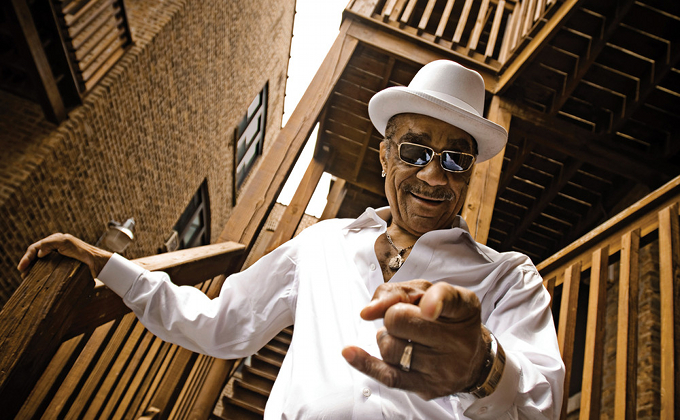
Shangri-Las – Leader of the Pack
https://youtu.be/Q8UKf65NOzM
Chiffons – One Fine Day
https://youtu.be/KvyOqKhKWQ4
Gene Vincent – Be Bop A Lula
https://youtu.be/LGI4PgAHxtg
The Edsels – Rama Lama Ding Dong
https://youtu.be/KStsPPgeka4
Sam and Dave – Don’t Pull Your Love
https://youtu.be/OqpDmOzrLbk
Frank Zappa – Later That Night
https://youtu.be/eZSZRqsCmQA
Martha and the Vandellas – Heatwave
https://youtu.be/XE2fnYpwrng
The Robins – Riot in Cell Block #9
https://youtu.be/_0qN6EBrhPU
Andre Williams – Jailbait
https://youtu.be/NWnyX12u9tQ
Wendy O. Williams – Reform School Girls
https://youtu.be/Uw5lweabF-o
James White – The Devil Made Me Do It
https://youtu.be/WfIekXy7rrI
George Clinton – Atomic Dog
https://youtu.be/LuyS9M8T03A
Prince – Unplugged Musicology
https://youtu.be/muqxaW2jAOc
Wendy and Lisa live at Baden Baden 1989
https://youtu.be/u1h7WsOW9oI

New Jersey native Lil Miller, now a resident of Altos del Maria, does not flaunt trappings of authority. She just manages a Spay the Strays Panama show that works on a shoestring budget and lots of donated labor of many sorts, and if nobody had pointed her out it would take some long and careful observation to discern her role. It’s not as if there is no organization — there are specialized roles, some more skilled than others. From the registration table to the veterinarians and assistants to the pre-op and post-op tables, to those who taxi animals among these places, to the tick pickers to the kids who pat the recovering kitties, people have their jobs and go about them. Some clean the surgical instruments, some clean the tables between operations, some make the coffee, snacks and lunch. Then there is a community of volunteers who bring in their own pets to be neutered, those of friends and neighbors as a favor, and homeless animals who will be released where they were found if they can’t be placed for adoption. Yes, there are dramatic moments like a cat that puts up fierce resistance to an injection — leaving a veterinarian bleeding — to a woman who comes in late without a reservation and won’t take no for an answer to her demand to bump someone who has been waiting in line so that she can be served. But everything runs smoothly, with neither insignia of rank nor proclamations of authority. As in well managed.
Spay the Strays is one of the several local organizations that sprang up in the wake of the Spay Panama project that Pat Chan started. Call it a “spinoff” if you must, but this group, which serves the beaches and mountain communities of Panama Oeste’s Chame and San Carlos districts, began in 2007 in partnership with two groups, Spay Panama and the McKee Foundation. It now has a life of its own. In its nine years it has neutered about 3,000 animals. Along with its independent existence Spay the Strays also has needs of its own. Most of all it needs funds to buy medicines and surgical supplies.
The needs that received priority on their June 18 spay day at the San Carlos Casa Comunal were about 75 dogs and cats — nobody brought in a rabbit or goat or boa constrictor to be neutered this time. Except from that one lady, the only complaints that this reporter noticed were from dogs and cats who objected to being stuck with needles.

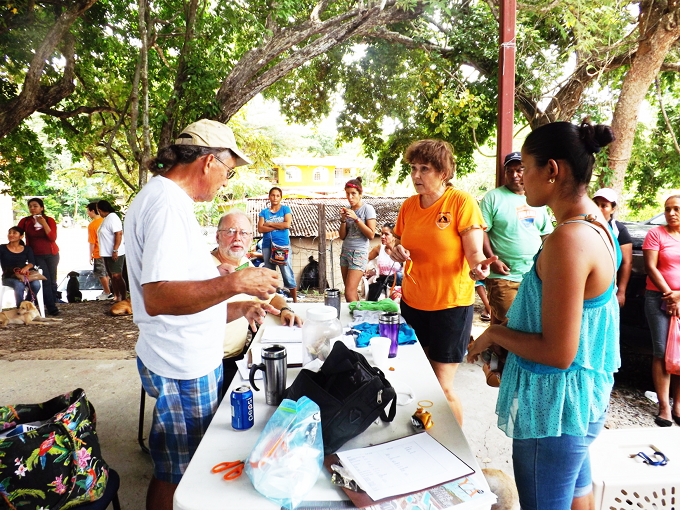
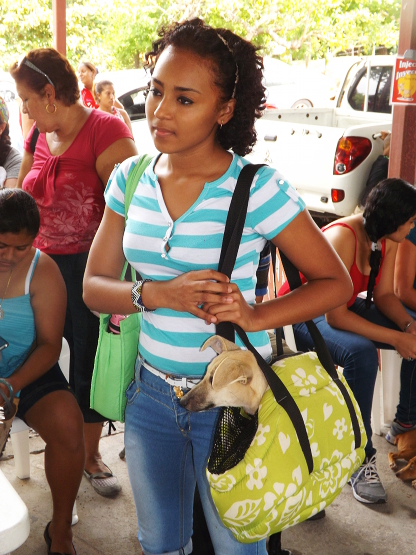

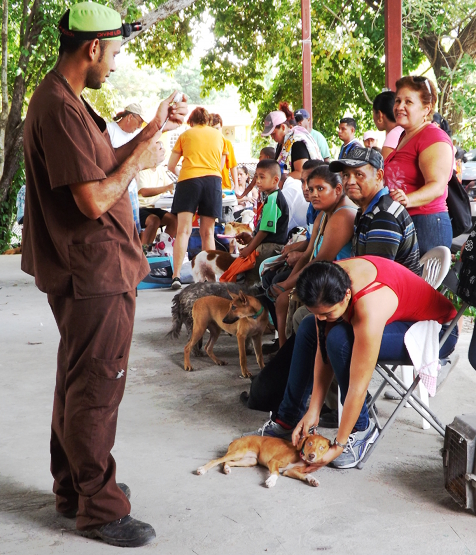

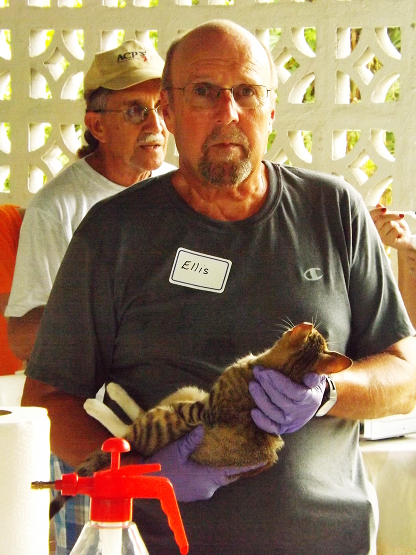
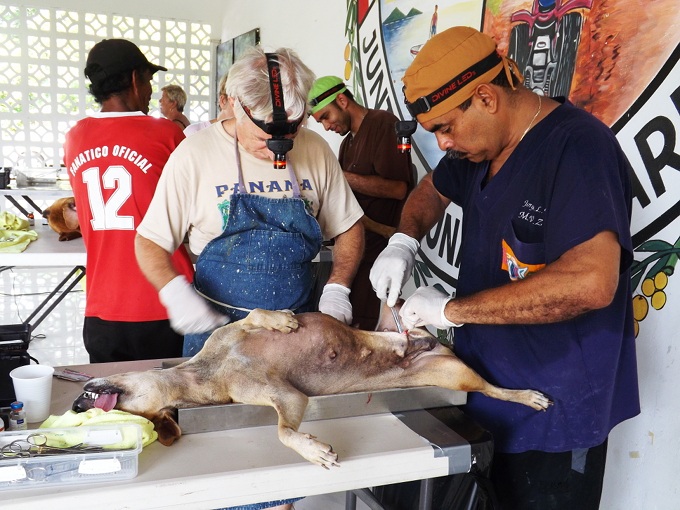
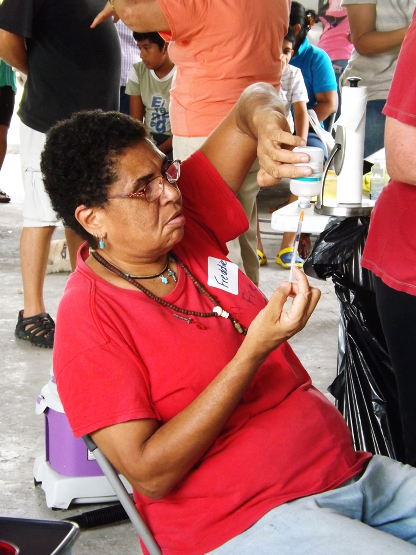



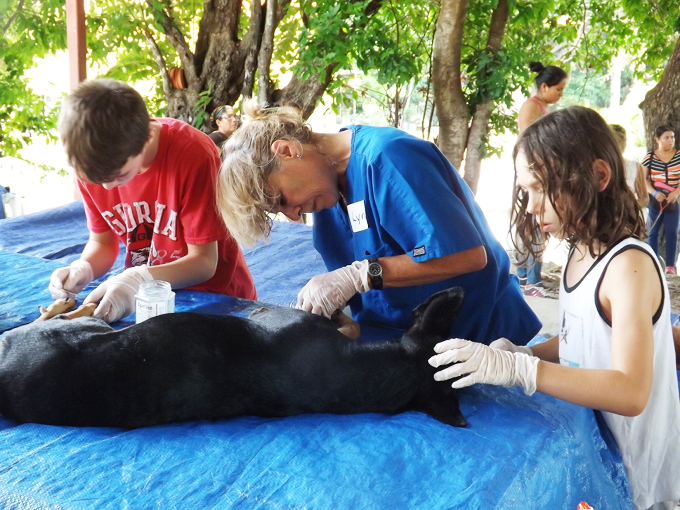
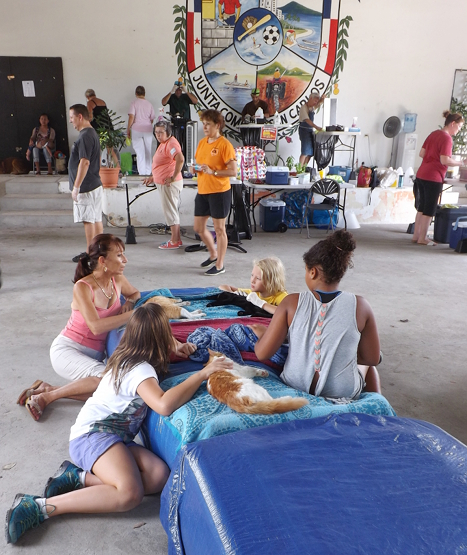

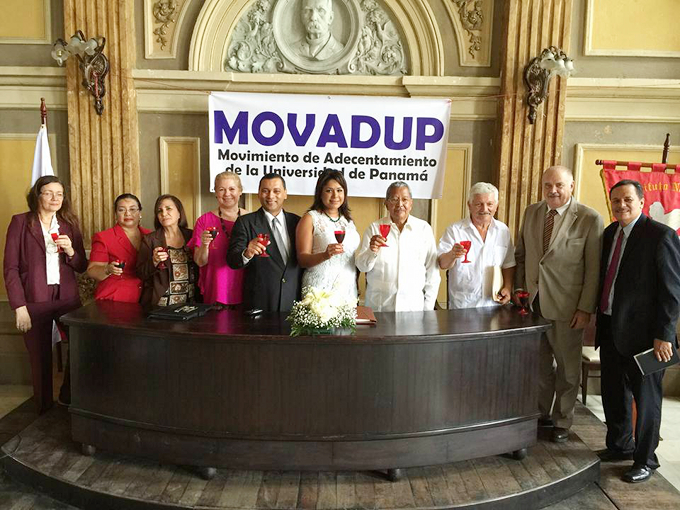 Carta abierta a los docentes de la Universidad de Panamá
Carta abierta a los docentes de la Universidad de PanamáRespetados profesores de la Universidad de Panamá:
El próximo 29 de junio de 2016 se efectuarán las elecciones en la Universidad de Panamá (UP) para elegir rector, decanos y directores de centros regionales. Con ellas debiera resultar el cambio por desalojo de autoridades y funcionarios que por los últimos 20 años han sepultado la visión de Méndez Pereira y han convertido a la UP en botín politiquero y antro de corrupción al mayor nivel, sumiéndola en el más atroz atraso académico.
Gustavo García de Paredes no solo debe irse él, sino todo lo que ha significado. Por lo tanto, tenemos que expulsar de la actividad directiva a todo lo que le haya estado relacionado. Solamente así podrán iniciarse las transformaciones que, debemos reconocer, no son posibles de alcanzar en los próximos cinco años, pero sí iniciarlas. Por eso debes sopesar tus posibilidades.
Apelamos a ti, docente de la UP, por ser a quien le corresponde la mayor responsabilidad, ya sea para el cambio o para que continúe lo que la UP sufre.
Lamentablemente, entre vosotros está la lacra de los juega vivo y los oportunistas que venden su conciencia por hasta una mínima extra salarial en concepto de botellas, ya sea con cargos ficticios en funciones de coordinador o bien de investigador.
Pero tú que no entras en ello eres también responsable y más por la apatía, por el no querer sacudirte de lo que bien sabes conoces o estás al tanto. A ti, sobre todo, apelamos.
Ha llegado la oportunidad en que te empoderes y pongas fin a la intimidación y coacción a la que te has visto sometido por el rector, vicerrectores, decanos, directores de centros regionales; a que sigas siendo amenazado con la asignación de horas de clase y horario; a que tengas sobre ti la amenaza de la expulsión y otras sanciones para que ni siquiera te expreses; a que te obliguen a asistir a actos de apoyo al Rector u otras autoridades; a que te traten como mercancía comprándote a través de ofertas improcedentes de aumentos.
Recapacita, analiza tus condiciones de trabajo y posibilidades de desarrollo académico, y con toda seguridad reconocerás que BASTA YA y les dirás ¡NO MÁS, FUERA! Entonces cantarás con Antonio Machado:
Caminante, son tus huellas/el camino y nada más;
caminante, no hay camino,/se hace camino al andar.
Al andar se hace camino,/y al volver la vista atrás
se ve la senda que nunca/se ha de volver a pisar.
¡EL PUEBLO PANAMEÑO RECUPERARÁ SU UNIVERSIDAD!
¡POR LA EXCELENCIA ACADÉMICA, ADECENTAMIENTO UNIVERSITARIO!
Comité de Coordinación Nacional
MOVADUP